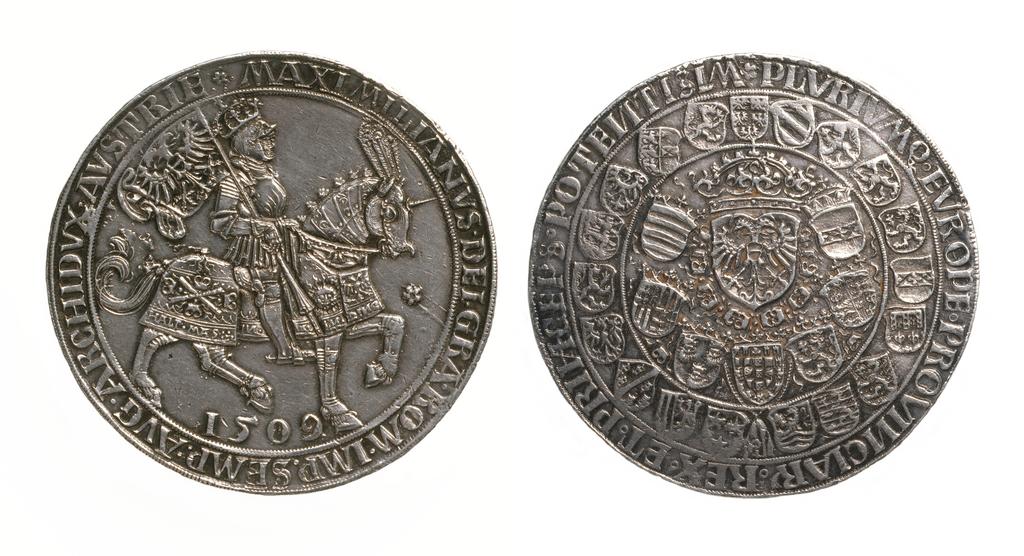This is one of the most splendid and renowned equestrian portrait coins of the Renaissance. It belongs to a new wave of large silver coins prompted by the discovery of new mines in the Tyrol and Saxony in the late 15th century. Yet even by current standards this new piece was more massive and impressive than anything that had gone before. Maximilian is shown in full ceremonial armour, with an imperial crown on his helmet and carrying the imperial banner. The horse, also in full dress armour, has plumes on his head and is draped with an ornate mantle richly decorated with symbols of the Empire and the House of Burgundy. The Krönungsdoppelguldiner was first produced in 1508-9 to mark the coronation of Maximilian I as Emperor. It was struck at Hall, in the Tyrol, in very small numbers as imperial presentation pieces. Only two Obv dies and one Rev were used, engraved by the court engraver Ulrich Ursentaler. The first Obv die carries no date, but the second, used for this coin, has 1509. In 1517 the dies were taken from Austria to the mint of Antwerp where they were used again with a rosette added before the horse. This specimen belongs to the 1517 issue. All three issues are very rare and highly prized.: CM.82-1999

 IIIF Manifest
IIIF Manifest



